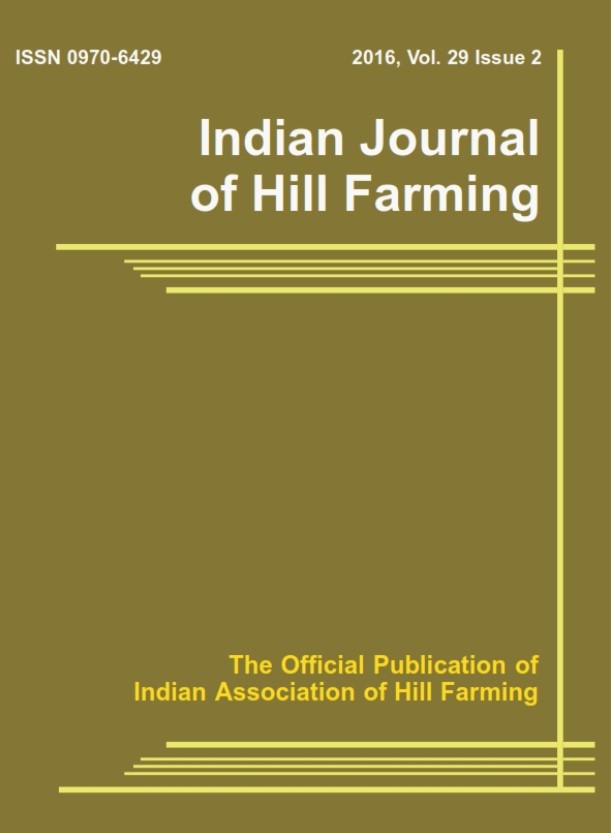Weed dynamics and its interference in pea
DOI:
https://doi.org/10.56678/Keywords:
Species richness, Weed growth rate, Relative yield loss, Weed diversity, Importance value indexAbstract
In the rabi season of 2020-21, a field experiment was conducted at the experimental farm of College of Post Graduate Studies in Agricultural Sciences (CAU, Imphal), Umiam to investigate the weed dynamics in pea crop. The experiment consisted of 14 treatments, which were divided into two sets, viz., weedy and weed free, replicated thrice. Results revealed that the weed community had a species richness of 13, belonging to 7 different families. Higher weed growth rate was recorded where weeds were allowed to compete with crop for longer duration. The highest relative yield loss in pea (44.31 %) was recorded in season long weedy plot. The plot where weeds were allowed to emerge after 60 DAS showed the highest weed diversity with ShannonWeiner diversity index, H´=1.948 and Simpson index D= 0.244. Galinsoga parviflora was found to be the most dominant weed with the highest importance value index (98.33 to 300) in all the treatments.Downloads
Published
2023-03-31
Issue
Section
Articles
License
Copyright (c) 2024 Arindam Deb, Vishram Ram (Author)

This work is licensed under a Creative Commons Attribution-NonCommercial-NoDerivatives 4.0 International License.
How to Cite
Weed dynamics and its interference in pea. (2023). Indian Journal of Hill Farming, 37(01), 07-18. https://doi.org/10.56678/




